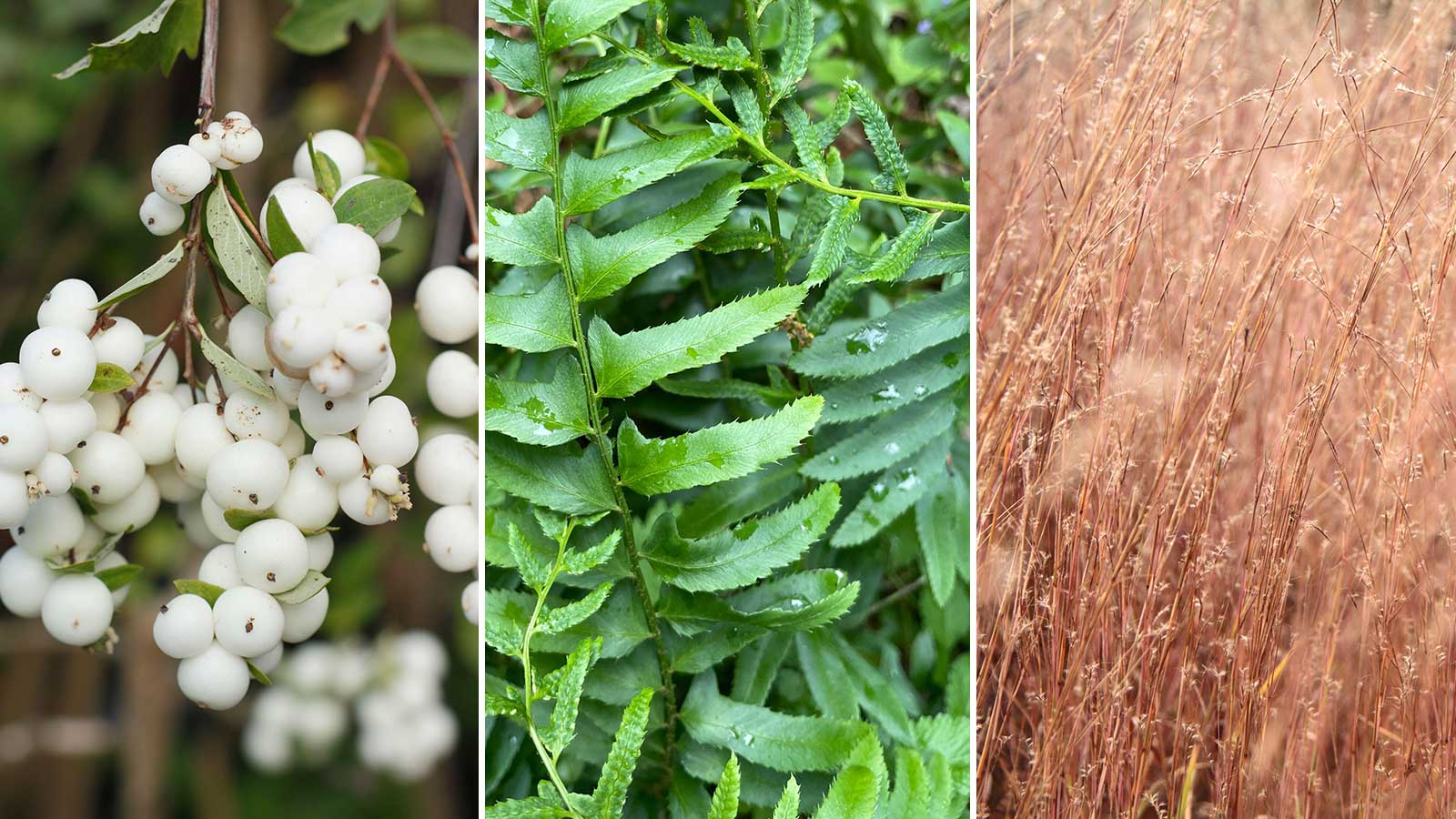
In the winter, our outdoor spaces can feel quiet, empty, and gray, and incorporating plants for wildlife is a great way to combat this. Not only will you be helping your local ecosystem survive the tougher months, but birds and other creatures are a joy to spot. Many suitable planting options will add aesthetic appeal to your yard, too.
There are lots of choices perfect for a winter wildlife garden, from berrying shrubs that birds adore to an evergreen fern that provides a home for moth larvae. Even herbaceous perennials can be beneficial if you leave some of their stalks as shelter.
For advice, I turned to the experts, who share their plant recommendations below. You'll also find handy growing tips for each.

5 wildlife-friendly plants for winter
Rather than picking just one variety, aim for a few.
Mary Phillips of the National Wildlife Federation says layering a combination of native shrubs, grasses, and trees provides essential cover and food for wildlife. 'Use the National Wildlife Federation’s Native Plant Finder to find species appropriate for your region,' she adds.
1. Golden Ragwort

Leah Brooks, an expert from the Mt. Cuba Center, recommends golden ragwort, which is a low-growing semi-evergreen.
It is a wonderful replacement for non-native ground covers like English ivy, Japanese pachysandra, and lesser periwinkle, she says. 'Golden ragwort provides winter cover for wildlife and beautiful yellow flowers for early spring pollinators.'
She suggests planting specimens four to six inches apart and allowing them to fill in the space. 'Seeds are fluffy and easily spread by the wind,' she says; 'Deadhead flowers to limit spread, or collect seeds and disperse elsewhere in your landscape.'
Golden ragwort plants are available from Amazon.
2. Snowberry

Mary notes how the white berries on these shrubs provide nutrition for songbirds and small mammals during harsh winter conditions. Not only this, but she highlights how the dense, thicket-forming branches offer shelter and protection from both inclement weather and predators.
These shrubs continue to benefit wildlife as the weather warms, too – Mary points out how the late-spring flowers provide nectar for native bees and other pollinators.
In terms of care, she recommends planting them in full sun to part shade. 'Established plantings are drought-tolerant,' she adds.
Snowberries are available to shop from Nature Hills.
3. Little Bluestem

Mary also recommends little bluestem, which is an ornamental grass that grows to around 3ft. The seedheads provide nutrition in winter for songbirds, she says, plus the 'dense clumps of foliage provide habitat for many beneficial insects in winter, such as skipper butterflies.' What's more, it's a larval host plant for several species of butterflies and moths, she adds.
Mary recommends planting it in full sun. It 'will tolerate most soil types if they are well-drained.
'Prune down to eight inches in early spring,' she advises – 'pruning to the crown may interrupt the life cycle of overwintering beneficial insects.'
Little bluestems are available from Nature Hills.
4. Hollow-stem Joe-Pye Weed

'This tall perennial flower is a buffet for butterflies in the summer and a refuge for insects in the winter,' says Leah. 'The hollow stems are very sturdy and thick, making them an attractive nesting habitat for native solitary bees.
'Stem-nesting bees create nest chambers in plant stems, depositing an egg on a provision of pollen,' she explains. 'Once the egg hatches, the larval bee will spend months developing and overwintering in the stem before emerging the following year as an adult.'
To create a habitat for stem nesting bees in your landscape, Leah recommends cutting back any sturdy, herbaceous stems to 8-24 inches at the end of the growing season. 'Next season’s new growth will hide the stem stubble, which should be left undisturbed and allowed to break down naturally over time.'
These plants do best in moist soil and full sun. Position them at the back of borders due to their height.
5. Christmas fern

'This evergreen fern is a wonderful addition to shady areas, and is tolerant of dry, rocky soils,' says Leah. 'It provides winter cover for wildlife and is the host plant of the fern leaftier Herpetogramma spingealis.
'The larval form of this moth species constructs globe-shaped shelters by rolling the tips of the fronds inward and securing them with silk,' she explains. 'Inside the shelter, the larva feeds on the fern leaves. As it grows, the larva abandons existing shelters and creates larger ones, usually on the same plant. These structures don’t cause lasting damage to the plants, and other insects take shelter in the empty globes.'
Leah recommends trimming back brown or dried fronds throughout the season for a more formal look.
FAQs
Are evergreen shrubs good for winter wildlife?
Evergreens offer shelter for birds and other wildlife – and can block winter winds for us humans, too, as Jeff Rugg, a gardening expert and National Garden Bureau member, points out.
'Yews and boxwoods are often pruned into hedges, creating a thick layer of branches and leaves around the top and edges while having an open branching framework on the interior,' he says. 'Snow will catch on the leaves forming a blanket that adds to the sheltering effect.'
There are also shrub varieties of spruces that act the same as the yews and boxwoods, he continues. 'Spruce trees are better than pine trees for winter shelter as they have a denser layer of branches and needles. During sunny days in the winter, you will see birds like mourning doves sitting on the sunny side of spruce trees where they can sit out of the wind while warming up.'
How else can you welcome wildlife to your yard in winter?
Be sure to feed birds throughout winter and prevent bird baths from freezing to give visiting wildlife an extra helping hand.
To welcome plenty of wildlife throughout the warmer months, too, don't forget to incorporate plants for pollinators and other plants for birds into your backyard.







